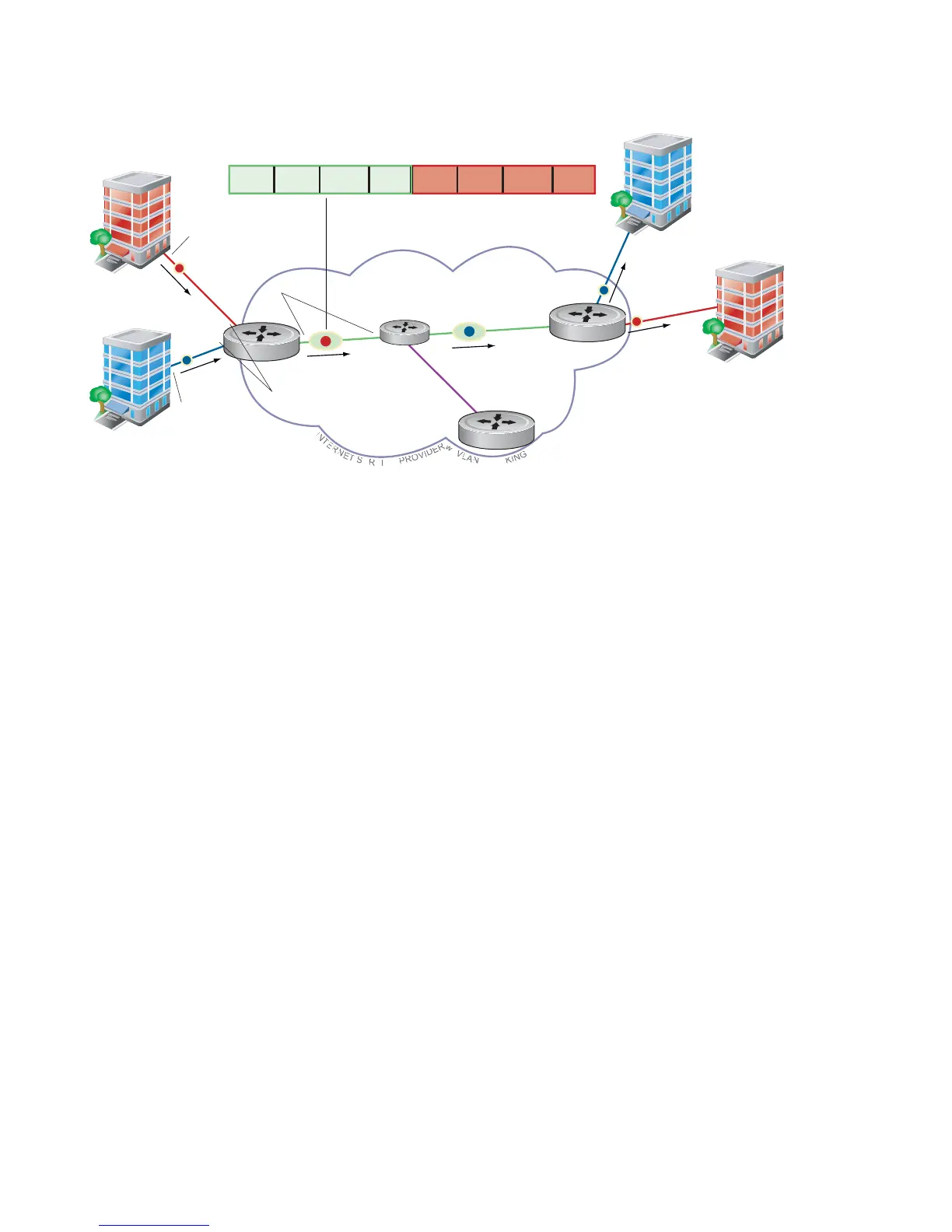914 | Service Provider Bridging
www.dell.com | support.dell.com
Figure 44-1. VLAN Stacking in a Service Provider Network
Important Points to Remember
• Interfaces that are members of the Default VLAN and are configured as VLAN-Stack access or trunk
ports do not switch untagged traffic. To switch traffic, these interfaces must be added to a non-default
VLAN-Stack-enabled VLAN.
• Dell Force10 cautions against using the same MAC address on different customer VLANs, on the
same VLAN-Stack VLAN.
• You can ping across a trunk port only if both systems on the link are an E-Series. You cannot ping
across the link if one or both of the systems is a C-Series or S-Series.
• This limitation becomes relevant if you enable the port as a multi-purpose port (carrying single-tagged
and double-tagged traffic).
Configure VLAN Stacking
Configuring VLAN-Stacking is a three-step process:
1. Create access and trunk ports. See page 915.
2. Assign access and trunk ports to a VLAN. See page 915.
3. Make the VLAN VLAN-stacking capable.
Related Configuration Tasks
• Configure the Protocol Type Value for the Outer VLAN Tag on page 916
• FTOS Options for Trunk Ports on page 916
• Debug VLAN Stacking on page 917
• VLAN Stacking in Multi-vendor Networks on page 918
VLAN 300
VLAN100
VLAN 200
VLAN 100
VLAN 100
V
LA
N 100
tagged 100
tagged 100
TPID
(0x8100)
PCP
CFI
(0)
VID
(VLAN Red)
TPID
(0x9100)
PCP
DEI
VID
(VLAN 300)
access port
trunk port

